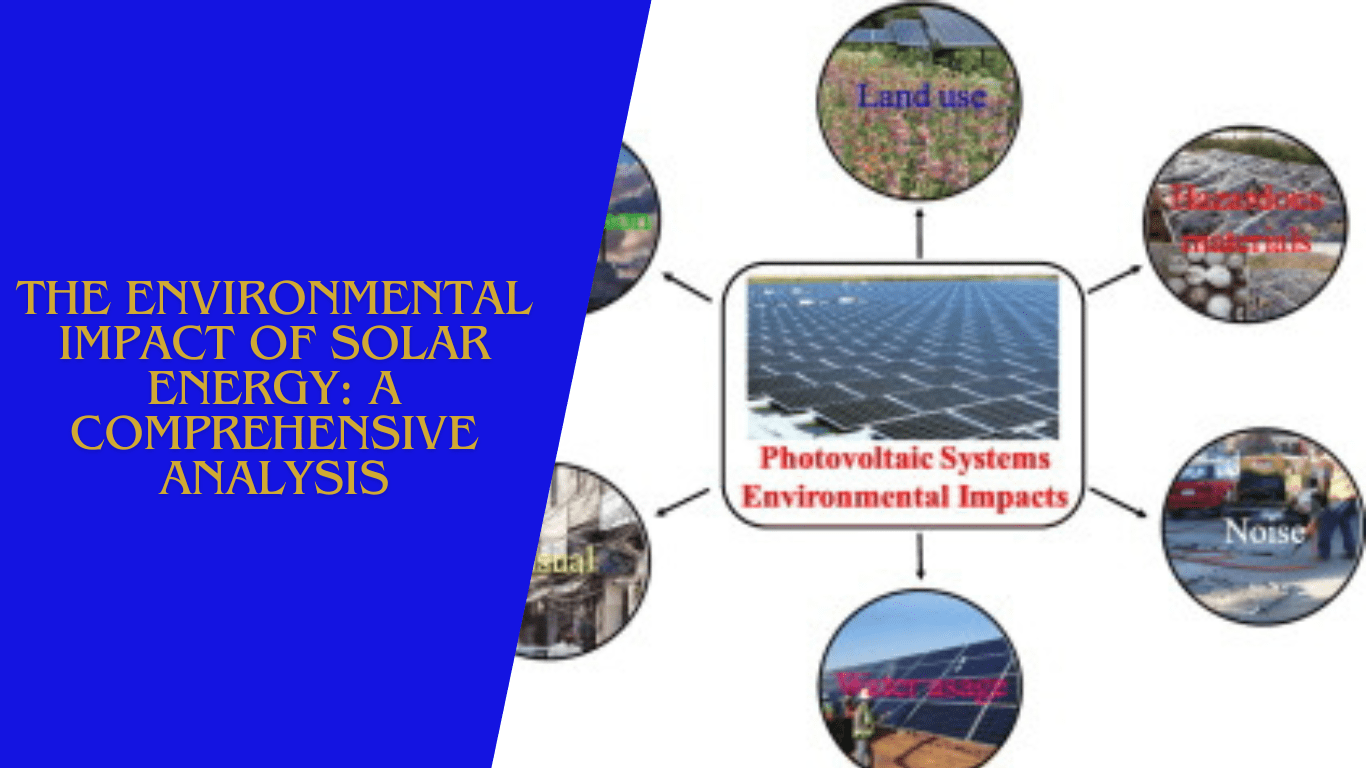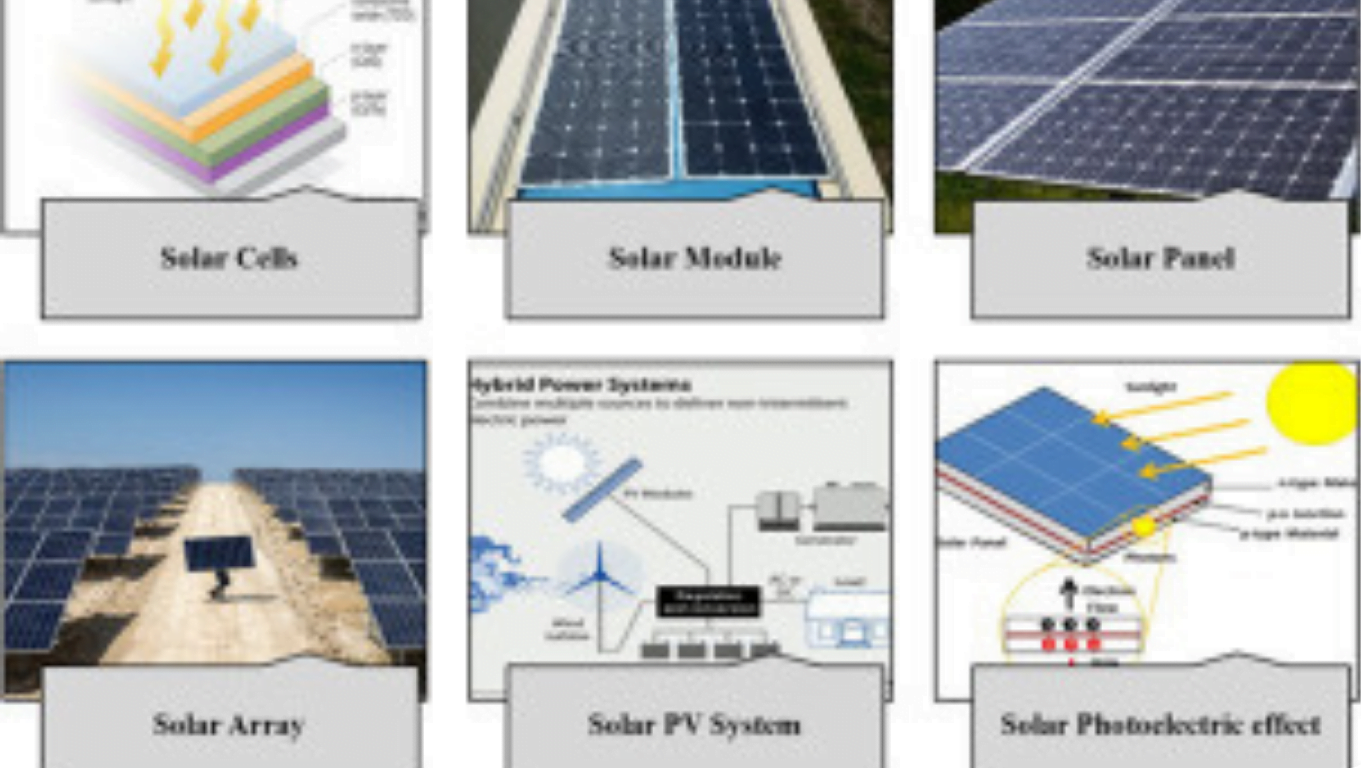
The environmental impact of solar energy is a topic of significant interest due to the growing use of solar power as a renewable energy source. Solar energy has both positive and negative environmental effects, and it is important to conduct a comprehensive analysi to understand its overall impact.
Several research articles provide valuable insights into the environmental impact of solar energy, covering aspects such as land use, public health and safety, noise and visual impacts, air and water pollution, wildlife and habitat, water requirements, and climate and greenhouse gases.
Additionally, studies have been conducted to assess the environmental impact of solar photovoltaic systems, including a comparative study of wind, solar, and hydroelectric power generation technologies. These studies can help in understanding the specific environmental implications of solar energy as compared to other renewable energy sources.
The integration of solar energy into existing power production systems has also been studied to evaluate its economic profitability and environmental impact. For example, the combined integration of Solar Thermal Collectors (STC) and Thermal Energy Storage (TES) into existing Combined Heat and Power (CHP) systems has been analyzed to assess the optimal design considering economic profitability and environmental impact.
This type of research provides valuable insights into the potential benefits of integrating solar energy into existing power production systems while minimizing environmental impact.Furthermore, life cycle assessments have been conducted to evaluate the environmental impact of electricity generation from distributed solar photovoltaic systems, providing a comprehensive analysis of the environmental implications of solar energy production. These assessments follow the International Standardization Organization (ISO) framework for Life Cycle Assessment (LCA) and consider factors such as solar insolation, climate, panel type, and system design to understand the overall environmental impact.
Environmental Benefits of Solar Energy
Solar energy has several environmental benefits that make it a promising solution for mitigating climate change. Solar energy improves air quality and public health by reducing the amount of air pollution that is produced by traditional energy sources.
It also reduces greenhouse gas emissions by producing clean energy without emitting air pollution or greenhouse gases during operation. Solar energy also conserves water and land resources by using a modest amount of water for cleaning solar collection and reflection surfaces and requiring less land for installation than other energy sources.
The decrease in greenhouse gas emissions and air pollution is one of the contributions that is most significant to public health.
By reducing the amount of carbon and other pollutants entering the atmosphere, cleaner air brought forth by solar energy adoption can enhance air quality and lower the incidence of respiratory illnesses like asthma and bronchitis.
The adoption of solar energy systems encourages sustainable development and fosters a transition to a greener future. Overall, solar energy has the potential to provide clean, economical, and dependable power to communities, especially in developing countries, and support the development of low-carbon and sustainable energy solutions.
- How does solar energy reduce greenhouse gas emissions and mitigate climate change?
- How does solar energy conserve water and land resources?
- How does solar energy improve air quality and public health?
Environmental Challenges of Solar Energy

a. What are the potential environmental impacts of solar energy production and consumption?
The potential environmental impacts of solar energy production and consumption are multifaceted. Solar energy can affect wildlife and ecosystems, as well as generate waste and pollution. Here’s a detailed overview based on the provided search results:
b. Environmental Impacts of Solar Energy Production and Consumption
- Wildlife and Ecosystem Impact:
- Waste and Pollution:
Best Practices and Mitigation Strategies
To mitigate the environmental impacts of solar energy, best practices and strategies include:
- Minimizing Habitat Disruption:
- Implementing measures to minimize habitat disruption during the construction and operation of solar energy facilities.
- Innovative Technologies:
- Utilizing innovative technologies, such as nanofluids, to improve the environmental performance of solar energy systems.
- Regulatory Frameworks:
- Implementing stringent regulatory frameworks and incentives to promote the environmental sustainability of solar energy, including waste management and pollution control.
Environmental Solutions for Solar Energy

a. What are the best practices and standards for minimizing the environmental impacts of solar energy?
To minimize the environmental impacts of solar energy, best practices include:
- Minimizing Construction-Related Compaction: This involves reducing soil compaction during the construction of solar farms to preserve natural hydrologic processes.
- Ensuring High Cover of Perennial Vegetation: Maintaining a high cover of perennial vegetation with minimal maintenance helps mitigate the environmental impact of solar farms.
- Designing with Pervious Space Between Solar Panel Rows: This promotes the infiltration of runoff, reducing the impact on land and water resources.
b. What are the innovative technologies and strategies for enhancing the environmental performance of solar energy?
Innovative technologies and strategies for enhancing the environmental performance of solar energy include:
- Flexible and Efficient Solar Energy Technologies: Advancements in solar photovoltaic (PV) and thermal systems, energy storage solutions, and control strategies contribute to enhancing building energy efficiency.
- Integration of Nanofluids: Using nanofluids with superior thermophysical properties can improve the thermal performance of solar energy systems, thereby enhancing their environmental and cost efficiency.
c. What are the policy and regulatory frameworks and incentives for promoting the environmental sustainability of solar energy?
Policy and regulatory frameworks for promoting the environmental sustainability of solar energy include:
- Stringent Building Codes and Standards: These are coupled with incentives for energy-efficient construction to promote sustainable architecture and urban planning.
- Integration of Green Spaces and Renewable Energy Sources: Incorporating green spaces, renewable energy sources, and smart technologies within urban infrastructure contributes significantly to energy conservation and environmental sustainability7.
- Regulatory Frameworks for Methane Emissions Reduction: In the context of the energy sector, new regulatory frameworks are being developed to reduce methane emissions, promoting greater transparency and accountability in environmental impact reduction.
What are the recommendations and implications for future research and practice?

The main findings of the analysis suggest that while solar energy is a clean and renewable energy source, its production and consumption can have environmental implications. The potential environmental impacts of solar energy production and consumption are multifaceted, including wildlife and ecosystem impact, waste and pollution.
Best practices and strategies to mitigate the environmental impacts of solar energy include minimizing habitat disruption, utilizing innovative technologies, and implementing effective regulatory frameworks.
The analysis also highlights the importance of sustainable practices in the tourism sector, such as using eco-friendly lodging, conserving energy and water, and utilizing renewable energy to reduce negative environmental impacts.
The limitations and uncertainties of the analysis include the fact that the environmental impact of solar energy production and consumption can vary depending on various factors such as solar insolation, climate, panel shading and soiling, and geographic location.
Additionally, the analysis is limited to the available research articles, studies, and life cycle assessments that provide valuable insights into the environmental impact of solar energy.
The recommendations and implications for future research and practice include the need for continued research to better understand the environmental implications of solar energy production and consumption, as well as the development of innovative technologies and strategies to enhance the environmental performance of solar energy.
Additionally, there is a need for effective regulatory frameworks and incentives to promote the environmental sustainability of solar energy, including waste management and pollution control.
Finally, sustainable practices should be adopted in the tourism sector to reduce negative environmental impacts.
1 thought on “The Environmental Impact of Solar Energy: Comprehensive Analysis”